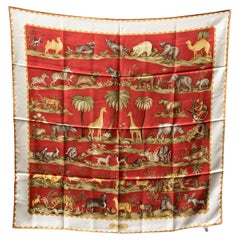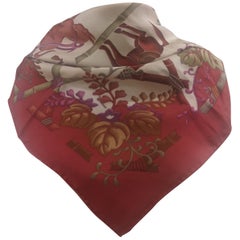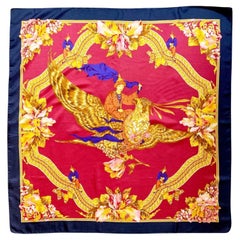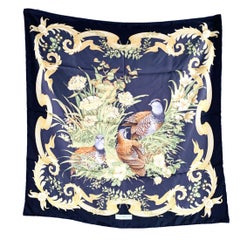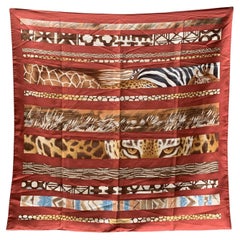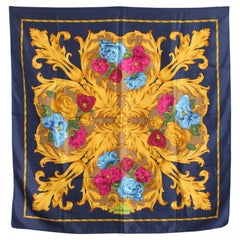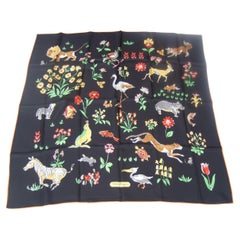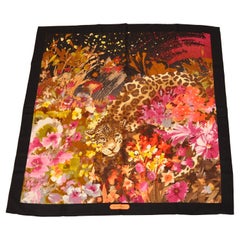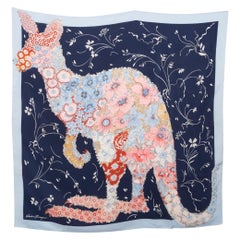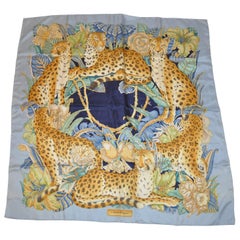Salvatore Ferragamo Silk Scarves
1990s Italian Scarves
1990s Italian Scarves
1980s Italian Scarves
21st Century and Contemporary Scarves
21st Century and Contemporary Scarves
1990s Italian Scarves
1990s Italian Scarves
1990s Italian Scarves
1980s Italian Scarves
1990s Italian Scarves
1980s Italian Scarves
1980s Italian Scarves
1980s Italian Scarves
Recent Sales
1980s Italian Scarves
Late 20th Century Italian Scarves
20th Century Italian Scarves
1990s Italian Scarves
21st Century and Contemporary Scarves
2010s Italian Scarves
1990s Italian Scarves
1990s Italian Scarves
Early 2000s Italian Scarves
21st Century and Contemporary British Scarves
2010s Scarves
1990s Italian Scarves
21st Century and Contemporary British Scarves
21st Century and Contemporary Italian Scarves
1990s Italian Scarves
1990s Italian Scarves
2010s Italian Scarves
19th Century Scarves
Late 20th Century Indian Scarves
20th Century Italian Scarves
21st Century and Contemporary Scarves
21st Century and Contemporary Scarves
21st Century and Contemporary British Scarves
21st Century and Contemporary Scarves
2010s Italian Scarves
Late 20th Century Italian Scarves
1970s Italian Scarves
21st Century and Contemporary Italian Scarves
Late 20th Century Italian Scarves
20th Century Italian Scarves
20th Century Italian Scarves
21st Century and Contemporary Italian Scarves
Late 20th Century Italian Scarves
1980s Italian Scarves
1980s Italian Scarves
21st Century and Contemporary Italian Scarves
1980s Italian Scarves
Early 2000s Italian Scarves
21st Century and Contemporary Italian Scarves
1990s Italian Scarves
21st Century and Contemporary Italian Scarves
1980s Italian Scarves
21st Century and Contemporary Scarves
21st Century and Contemporary Scarves
Early 2000s Italian Scarves
1980s Italian Scarves
2010s American Scarves
Late 20th Century Italian Scarves
1980s Italian Scarves
1990s Scarves
Late 20th Century Italian Scarves
1970s Italian Scarves
Late 20th Century Italian Scarves
Late 20th Century Italian Scarves
1980s Italian Scarves
1970s Italian Scarves
1990s Italian Scarves
1990s Italian Scarves
1980s Italian Scarves
1990s Italian Scarves
People Also Browsed
1990s French Scarves
2010s French Scarves
1980s Italian Scarves
1990s Italian Scarves
Salvatore Ferragamo Silk Scarves For Sale on 1stDibs
How Much are Salvatore Ferragamo Silk Scarves?
Salvatore Ferragamo for sale on 1stDibs
A perfectionist who as a child crafted a pair of white shoes for his sister’s first holy communion because his parents couldn’t afford new footwear, Salvatore Ferragamo was ambitious from his earliest days. The young Italian shoemaker established in the years that followed what would one day become a fashion empire — the highly profitable multinational family-owned and -operated luxury brand today counts more than 600 stores in 96 countries around the world, and vintage Salvatore Ferragamo shoes, belts, handbags and other clothing and accessories are objects of desire for fashion lovers everywhere.
Salvatore Ferragamo sought an education in the art of shoemaking when he was eleven — he apprenticed with a local shoemaker and spent a short time in nearby Naples learning what he could at a shoe factory. He opened his first shop with a handful of workers the following year, and in 1914 — when he was still a teenager — Ferragamo emigrated to America, just as his siblings had before him, seeking new opportunities for work and to learn in the footwear trade.
After securing a job at the Plant Shoe Factory in Boston, Massachusetts, Ferragamo was uninspired by machine-made footwear. He moved across the country to Santa Barbara, California. Owing to a connection he made with a then-actor cousin, Ferragamo found work with the American Film Manufacturing Company. He made women’s shoes and provided durable cowboy boots for a film crew’s costuming department. Ferragamo’s reputation in the world of Hollywood cinema soon broadened, and he established a storefront in Mission Canyon where he made shoes by hand for the likes of actresses Gloria Swanson, Greta Garbo and Dolores del Río.
By the 1920s, film directors commissioned Ferragamo to produce shoes for a range of movies — the list of films eventually included The Ten Commandments, The Covered Wagon and The Thief of Baghdad. When he felt comfortable enough with the English language, Ferragamo also enrolled in anatomy courses at the University of Southern California in Los Angeles in order to better understand motion and the demands that we place on our footwear.
By the late 1920s, Ferragamo sought to expand production of his shoes and returned to Italy. He hired scores of apprentices to work in a factory in Florence, where Ferragamo carefully melded the principles of handcraftsmanship with all that he learned about America’s shoe factories. He filed patents — hundreds over the years — on the steel shank arch and many other unique aspects of his shoe design, and when economic and political influences during the 1930s forced Ferragamo to substitute pressed cork for steel to support the arch, the wedge heel was born. Other creative materials he integrated into his forward-looking creations were hemp, felt, nylon fishing line, fish skin and cellophane twisted with silk.
In the late 1940s, the brand’s first storefront opened in Manhattan, and today Salvatore Ferragamo is known worldwide and is synonymous with a wealth of iconic footwear such as Viva ballet flats, Vara Bow pumps, Gancini loafers and lots more. Ferragamo’s son, Ferruccio, was appointed CEO in 1984. Under his leadership, Ferruccio diversified and expanded the fashion business further, getting into sunglasses, fragrance, watches and made-to-measure men’s shoes. Ferruccio was succeeded by his brother, Leonardo Ferragamo, and British designer Maximilian Davis is now creative director of the brand.
Find vintage Salvatore Ferragamo shoes, clothing and accessories on 1stDibs.
Finding the Right Scarves for You
We’ve long had a love affair with vintage and designer scarves. Every glamorous go-to ensemble deserves the lightweight finishing touch that can be added with this stylish, versatile accessory.
Scarves have held a distinctive place in the evolution of formal and casual wear for centuries. And although now firmly entrenched in western culture, the origins of this neckwear are global.
Egyptian Queen Nefertiti is known to have worn a finely woven scarf with a headdress, and Emperor Cheng of the Chinese Han dynasty presided over an army of warriors whose scarves denoted their rank. The idea of scarves as status symbols still persists; for example, silk scarves, which were favored by the upper class during the reign of Queen Victoria, are an out-of-reach luxury item, cost prohibitive for many consumers. However, the increasing diversity of available materials over the years has rendered this adornment more accessible since their early days.
Luxury houses and various designers helped elevate scarves and long, flowing wraps as a desirable fashion accessory during the 20th century.
Visionary Italian designer Emilio Pucci — the first fashion designer to enter the lifestyle market — introduced abstractions and dazzling psychedelic elements to scarves, while mid-century era multidisciplinary American artist Vera Neumann drew on Japanese techniques to create exuberant textile designs based on her paintings and drawings.
Established in Paris in 1837, Hermès didn’t start creating their famously decorative scarves until 100 years later, in 1937. Before long, the Hermès scarf, then crafted from strong imported Chinese silk, became an iconic work favored by actresses such as Audrey Hepburn and Grace Kelly, a lifetime enthusiast of the family-owned brand. Hermès has produced over 2,000 different scarf designs in the decades since Robert Dumas, Émile-Maurice Hermès’s son-in-law, crafted the first one.
On 1stDibs, find a broad selection of vintage scarves that includes flamboyant and colorful accessories designed by Chanel, Yves Saint Laurent and more.
